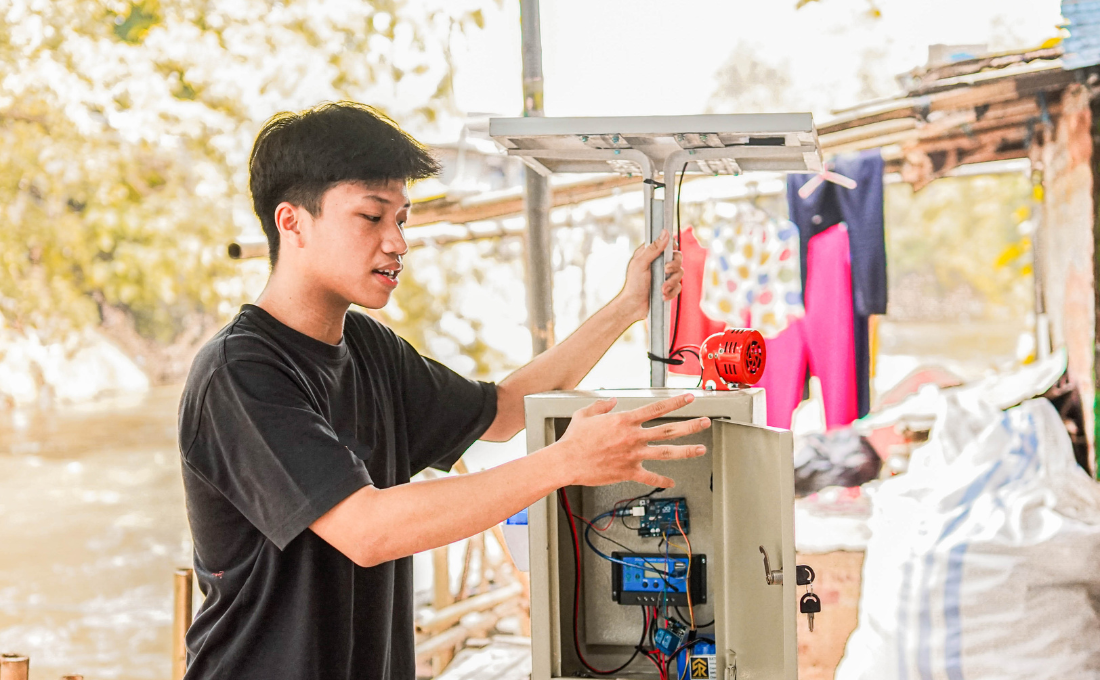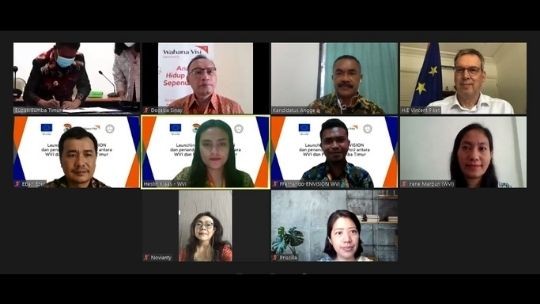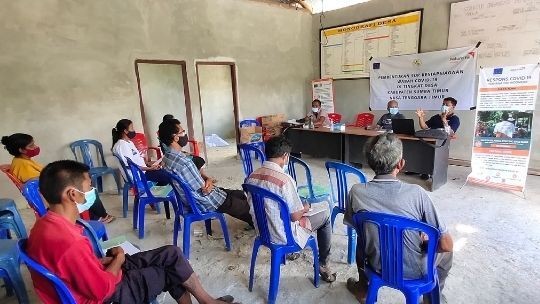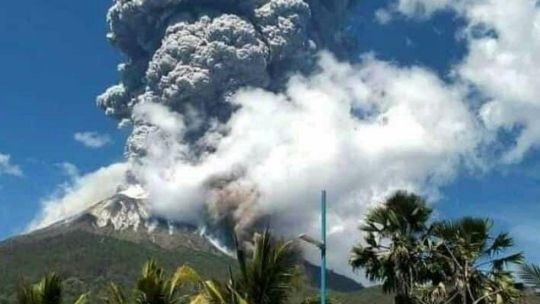Customized DEWS Tools Made by Children from Kampung Melayu

Had lived and grown up in an environment where flooding is a regular occurrence, Nazriel was compelled to do something about it. He realized that disasters can actually be predicted, the risks can be managed, and the impact minimized. The children and communities in his or other neighborhoods can also learn to adapt to the floods that often hit Kampung Melayu area in East Jakarta.
From this situation, without hesitation, Nazriel took a role in building Kampung Melayu area disaster preparedness. As a teenager pursuing engineering, Nazriel utilized his skills to update the existing flood early detection devices on the riverbanks that cross Kampung Melayu area. The flood early detection device (teksiban) was installed by BPBD so that people can find out the water level of rivers that are prone to flooding. However, the teksiban's loudspeakers are not strong enough to reach people's homes. Nazriel was one of the young community member who filled this gap.
"In addition, the existing teksiban cannot reach all houses near the river. So I tried to innovate by making this teksiban, which is suitable for the situation in this area," said the student of a vocational school in East Jakarta.
Nazriel's idea to make a "homemade” Kampung Melayu teksiban was facilitated and developed with the ANTICIPATION project team. This project is a collaboration between WVI and ADH that uses a child-focused and inclusive anticipatory action approach. After discussions, surveys and trials, Nazriel and the team were able to launch the teksiban made by the children of Kampung Melayu.
"This teksiban has a solar panel on the top as a source of energy during the day. Inside it is a battery as an energy source at night. Besides the detection device, there is also a sensor at the bottom to monitor the water level. Then there is a siren alarm that will sound when the sensor detects the water level," Nazriel explained about the tool.
With the teksiban created by Nazriel and his team, more children and communities can get early warning information. In addition, with the ANTICIPATION project, children and communities also understand and are able to take anticipatory or early action if a predicted flood disaster strikes.
"I am happy to be able to contribute to early warning for anticipatory action in the neighborhood. I can help other people to take early action, besides I also can get the opportunity to build networks and work with organizations that deal with disasters," concluded Nazriel.
With an early warning system that is suitable for the characteristics of the area, and equipped with anticipatory actions to face disasters, the people of Kampung Melayu, especially children, the elderly, and people with disabilities, can increasingly avoid the consequences of disasters that can threaten the wellbeing of all people.
Author: Mariana Kurniawati (Communication Executive)



